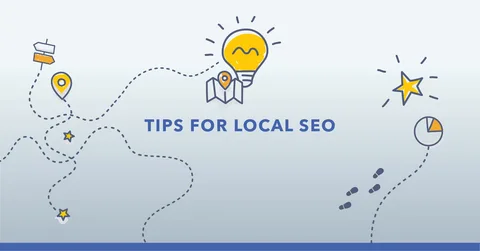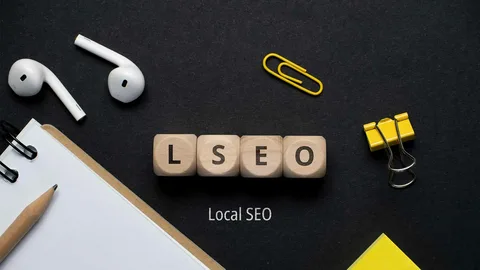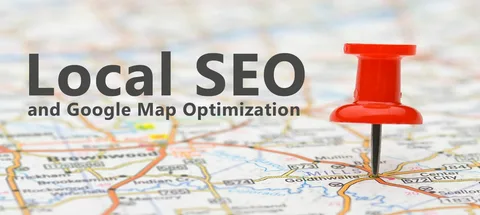How Local Businesses Like Salons and Plumbers Are Winning Customers Online in the UK
In today’s competitive market, niche businesses such as salons and plumbers are finding creative ways to reach customers online. Local SEO in the UK has emerged as a game-changer, enabling small businesses to rank higher in local search and connect with nearby customers seeking their services. From optimizing Google Business Profiles to leveraging customer reviews, UK businesses are mastering the art of local SEO to drive growth and visibility.
In this blog, we’ll explore how local SEO for small businesses in the UK is transforming the online presence of niche services and provide actionable tips to implement these strategies effectively.
Why Local SEO Matters for Niche Businesses in the UK
For businesses like salons and plumbers, being discoverable online is essential. Unlike larger companies with global reach, niche businesses rely heavily on local customers. Local SEO ensures that when someone searches for “plumber near me” or “salon in London,” your business appears at the top of search results.
The Benefits of Local SEO:
- Increased Visibility: Appear in local search results and Google Maps.
- Targeted Traffic: Attract customers who are actively searching for your services.
- Higher Conversion Rates: Local customers are more likely to engage with nearby businesses.
- Cost-Effective Marketing: Focus on your immediate audience without wasting resources.

How to Rank Higher in Local Search
Ranking higher in local search requires a combination of optimized content, technical SEO, and a focus on user experience. Here are the steps niche businesses in the UK are using to dominate local search results:
1. Optimize Your Google Business Profile
A Google Business Profile (GBP) is a cornerstone for local SEO. It helps your business appear in Google’s Local Pack, which is often the first thing users see when searching for local services.
- Tips for Optimization:
- Use accurate business information (name, address, phone number).
- Include high-quality images of your work or premises.
- Regularly update your profile with posts, offers, and news.
- Collect and respond to customer reviews.
2. Focus on Local Keywords
Using the right keywords ensures your business shows up in relevant searches. Keywords like “local SEO for small businesses UK” or “plumber in Manchester” help target specific audiences.
- Actionable Steps:
- Research local keywords using tools like Google Keyword Planner or Ahrefs.
- Include keywords in titles, meta descriptions, and headings.
- Create content that addresses local needs, such as “Top 5 Hair Trends in Birmingham” or “How to Prevent Plumbing Issues in Cold UK Winters.”
3. Build High-Quality Local Backlinks
Backlinks from reputable local websites signal to search engines that your business is trustworthy.
- How to Get Local Backlinks:
- Partner with local blogs or news sites.
- Sponsor community events or charities.
- Get listed in local directories like Yell.com or Checkatrade.
4. Encourage and Manage Customer Reviews
Reviews not only build trust but also improve your local SEO ranking. Positive reviews influence potential customers and increase your credibility.
- Best Practices:
- Ask satisfied customers to leave reviews on Google and other platforms.
- Respond to all reviews, both positive and negative, professionally.
- Highlight reviews on your website or social media.

Local SEO Strategies That Work for UK Salons
Salons face fierce competition in urban areas, making local SEO essential. Here’s how salons in the UK are using SEO to stand out:
Showcase Your Unique Selling Points
Highlight what makes your salon special, whether it’s eco-friendly products, late-night hours, or award-winning stylists.
- Example: A salon in Brighton uses “organic hair treatments” as a keyword and promotes this unique service in all their online content.
Leverage Social Media
Social media platforms like Instagram and Facebook play a critical role in local SEO.
- Tips:
- Post regular updates, before-and-after photos, and customer testimonials.
- Use location-specific hashtags like #LondonSalon or #ManchesterHairdresser.
- Link to your website and Google Business Profile from your social media pages.
Local SEO Strategies That Work for UK Plumbers
Plumbers often rely on urgent service requests, making high visibility in local search crucial. Here’s how plumbers in the UK are winning online:
Create Service-Specific Pages
A dedicated page for each service helps you rank for multiple keywords.
- Example: A plumber in Leeds creates separate pages for “emergency plumbing,” “boiler repair,” and “bathroom installation.”
Use Location-Based Content
Publishing blogs or guides that address local issues boosts engagement and SEO.
- Example Topics:
- “How to Insulate Pipes for Winter in Scotland”
- “Top Plumbing Tips for London Apartments”
Implement Schema Markup
Schema markup helps search engines understand your business better. For plumbers, this can include service details, operating hours, and location.
- Tools: Use Google’s Structured Data Markup Helper to add schema to your website.

Challenges and Solutions in Local SEO
Local SEO isn’t without its hurdles, but these challenges can be overcome with the right approach:
1. Keeping Listings Updated
Inconsistent information can hurt your rankings. Regularly audit your business listings to ensure accuracy.
2. Managing Negative Reviews
Negative reviews can impact your reputation. Address them promptly and professionally, offering solutions where possible.
3. Competing with Larger Chains
Focus on personalized service and local expertise to differentiate yourself from larger competitors.
Measuring Success in Local SEO
Tracking the effectiveness of your local SEO efforts ensures you’re on the right path. Key metrics include:
- Local Search Rankings: Use tools like BrightLocal to monitor your position in local search results.
- Website Traffic: Analyze data from Google Analytics to see how local visitors interact with your site.
- Customer Inquiries: Track calls, emails, or form submissions that result from local SEO.
- Review Count and Quality: Monitor your Google reviews and aim for consistent growth.
The Future of Local SEO in the UK
As technology advances, local SEO will continue to evolve. Emerging trends include:
- Voice Search Optimization: With more people using voice assistants, optimizing for phrases like “find a plumber near me” is becoming essential.
- AI-Driven Insights: AI tools are helping businesses predict customer behavior and refine their strategies.
- Sustainability Focus: Highlighting eco-friendly practices in your SEO strategy can resonate with environmentally conscious customers.
Conclusion
Local SEO in the UK is a powerful tool for niche businesses like salons and plumbers to connect with their target audience. By focusing on strategies such as optimizing Google Business Profiles, building local backlinks, and leveraging customer reviews, small businesses can rank higher in local search and attract more customers.
Whether you’re a salon in Glasgow or a plumber in Bristol, implementing these local SEO tips will set you on the path to online success. Start today and watch your business thrive in the competitive UK market.




Post Comment